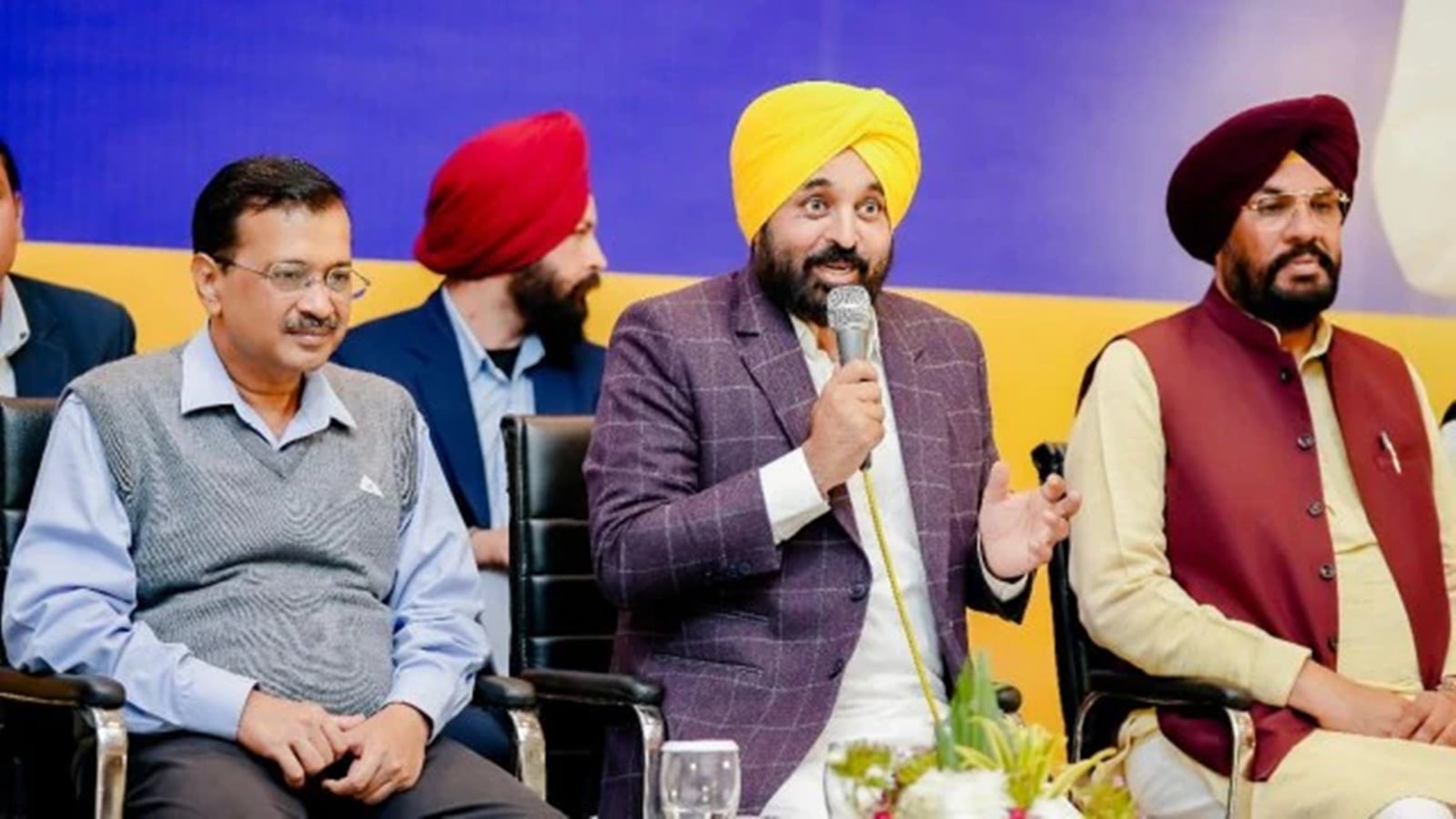The Aam Aadmi Party is facing an existential crisis and the ripple effects are being felt in Punjab. Showcasing its “Delhi Model” of urban governance in Punjab, it portrayed itself as the party of change, which doesn’t play identity politics, while being at a remove from Punjab-specific issues, such as the agrarian crisis, national security and communal harmony. The Delhi results have demonstrated that there are serious challenges for the AAP, while an opportunity has appeared for the traditional political parties to reclaim their lost political space.
The grammar of politics introduced by the AAP sounded new and fresh with an indigenised menu card even as it branded itself as a party for change. It was a brand of pop-corn politics, which promised instant taste and quick dividends. The AAP branded itself as a paternalistic caretaker party through promises like free education, free medical treatment, free electricity up to 200 units, and free bus rides for women.
Story continues below this ad
This, incidentally, appeared as another dimension of the new orthodoxy of globalisation, which emphasises speed of cash transfers and speed of investments. The speed with which television, internet and social media spread misinformation is also in sync with the “morality” of the market.
Pop-corn politics uses speed to kill deliberative, reflective and dialogical time for critical analysis and it encourages reactive exchanges. This kind of politics was never meant to have longevity as it was not located in any ideology.
No doubt, it garnishes its politics with elements of ideology through gimmicks such as reciting Hanuman Chalisa to be on the right side of majoritarian politics. To provide content, it also promised a stipend for the pujaris of temples and a free teerth yatra. The AAP has not been able to deliver what it promised in the name of political change. For Punjab, the implication has been that the AAP was no different from the traditional parties, and as such, a feeling of betrayal has set in. The AAP government would now have to deliver in the real sense and not limit itself to fancy marketing ideas.
Story continues below this ad
The overall approach has been to use a cocktail of doles and promises containing something for everyone’s taste. So, we have in the elections a sort of menu-festo rather than a manifesto. There is a menu card for farmers, traders, students, Dalits, industrialists, women, to cater to everyone’s taste, replacing the manifesto which is, by definition, a declaration of the principles, policies, intentions and, of course, ideological commitment of the political party. The credit for this invention goes to the AAP. It is a reinforcement of the notion that it is the voters’ perception which constitutes reality. It does not matter who the leader is, or what he believes in. What matters is: How was he perceived by the voters? The focus is on marketing the image of a leader that the voters want the most.
The challenge that the AAP now faces is to revisit the “Delhi Model” of urban governance and redefine the meaning of change in the context of the specificities of Punjab.
The mobilisations based on catch-all categories to maximise votes have blurred religio-caste, class and ethnicity fault lines. This new way of doing politics is largely based on building perceptions by reaching out to footloose voters looking to move away from the status quo, ideologically unbound and pragmatic floating votes seeking doles, and new young voters in communication with the anarchist social media. It certainly unnerves the traditional political parties and leaders struggling to overcome the massive trust deficit against politicians and politics.
A political churning is in the offing. It will be a challenge for the AAP to maintain a stable government and deliver on its promises in the remaining two years of its tenure in Punjab. The state is likely to undergo “political engineering” experiments, including replication of the “Maharashtra model”.
The first challenge for the AAP, therefore, is to keep the party consolidated as its leaders are footloose and there are no boundaries drawn by ideology, only compulsions of power. It is a major task to keep a large number of the AAP legislators — 92 in a House of 117 — satisfied. Another challenge is to broaden the scope of their innovation of pop-corn politics to real state-specific politics.
There is a reassertion of radical politics in Punjab, as is evident from the electoral victory of the radical preacher Amritpal Singh from Khadoor Sahib, and that of Beant Singh, the son of the assassin of former Prime Minister Indira Gandhi. These victories will have a polarising effect and lead to insecurity and fear amongst non-Sikhs as well as a section of moderate Sikhs.
most read
This polarisation may not act as a push factor for Hindu and Dalit voters towards the BJP because it is culturally ingrained that Sikhs are their saviours. This may work to the advantage of the Akali Dal, who are well entrenched in every village. A large section of the Sikh youth is more inclined towards leaders like Sukhbir Singh Badal, who have a record of moderation and governance, rather than a leader like Amritpal.
There is an opportunity for the Congress party to rejuvenate its organisation and formulate a development agenda, learning lessons from the shortcomings of the Congress regime led by Captain Amarinder Singh. For the Akali Dal there is an opportunity and challenge to set their house in order and as a Sikh-centric party rebuild bridges with other communities. The lesson from the past elections is that the BJP on its own cannot emerge as a dominant force and the SAD without building an alliance with the BJP may not be in the reckoning in Punjab.
The writer is chairperson, Institute for Development and Communication (IDC), Chandigarh


